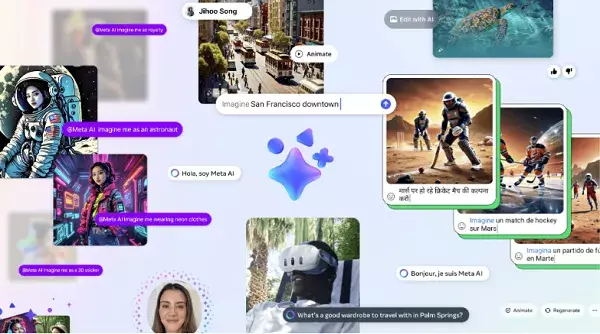Meta is taking steps to expand its Meta AI chatbot to more regions and languages, with seven new regions and languages being added to the mix. This move indicates a commitment by Meta to reach a wider audience and make its AI tools more accessible to users worldwide. Mark Zuckerberg, Meta’s CEO, believes that the bot is on track to becoming the most used AI assistant in the world, thanks to the massive user base of Meta’s platforms. However, the question remains whether this popularity is driven by utility or simply by ubiquity.
In addition to expanding access to its chatbot, Meta is also introducing new creative functions for users to explore. One of the new features allows users to create AI-generated images of themselves directly from the chat stream. This feature, called “Imagine me,” gives users the ability to transform their photos into unique and imaginative images, such as becoming a superhero or a rockstar. While this feature may offer some novelty at first, its long-term appeal remains to be seen.
Meta is also adding editing tools for generative AI images, allowing users to customize and refine their creations in-stream. This new feature will make it easier for users to make adjustments to their AI-generated images, such as adding or removing objects or changing elements within the image. The ability to fine-tune these images could prove to be a valuable addition for users looking to create unique and personalized content using Meta’s AI tools.
One of the biggest concerns surrounding Meta’s integration of AI content is the potential dilution of the human element in social media. With the increasing reliance on AI-generated content, there is a risk that the authentic social interactions that users value may be overshadowed by automated processes. While AI tools can enhance creativity and expand possibilities, there is a fine line between empowering users and diminishing the organic nature of social connections.
Meta is also introducing a new option that allows users to choose which AI model they want to use for different tasks within the app. This feature gives users more control over the AI tools they interact with and enables them to access more advanced capabilities for specific tasks, such as math and coding-related queries. While this option may appeal to some users seeking greater customization, it may not see widespread adoption due to its technical nature.
Meta is taking its AI tools into the realm of virtual reality, with Meta AI being launched in VR beta with selected users in North America. This move highlights Meta’s focus on integrating AI tools into immersive experiences, opening up new possibilities for VR development. By enabling users to control their VR headsets hands-free and access real-time information using Meta AI, Meta is paving the way for a future where AI-driven experiences are seamlessly integrated into everyday interactions.
Meta’s latest developments in AI represent a significant step towards a future where AI plays a central role in how users interact with digital tools. While there are concerns about the potential impact on social connections and authenticity, the promise of Meta’s AI tools lies in their ability to enhance creativity, expand possibilities, and pave the way for innovative experiences in virtual reality. As Meta continues to evolve its AI development plan, it will be interesting to see how users embrace these new tools and how they shape the future of digital interactions.


Leave a Reply